15 Types of Jasmine Flowers (With Pictures)
-
Ed Malaker
- Last updated:
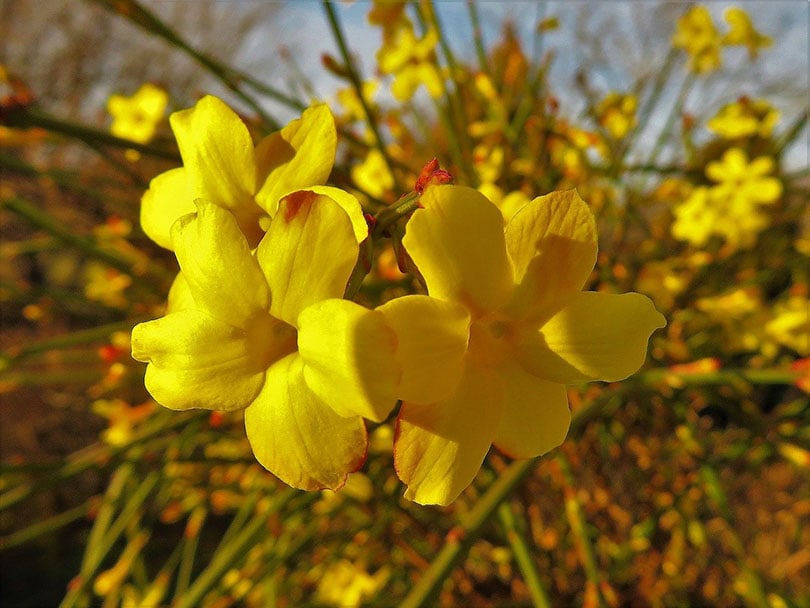
If you are a gardener, you know it can be fun to learn about a lot of different types of plants, but you also know if you need something specific, it’s not easy to sort through the many plants to find what you need. One of the most fun varieties to try out is Jasmine because most varieties produce fragrant and attractive flowers that will improve the appearance of your yard and will also attract butterflies and other wildlife. So, keep reading while we look at several varieties of Jasmine that we think will be perfect for your home. For each one, we’ll provide you with a short summary and a picture to help you make an informed purchase.
The 15 Types of Jasmine Flowers
1. Common Jasmine

- Size: 40 feet
The Common Jasmine seems like a great place to start because it’s one of the most popular varieties, as the name suggests. It can grow to about 40 feet long, and with proper care, it can be 15 feet thick. It likes moist but well-drained soil with plenty of organic material for nutrients and plenty of sunlight. It has pink to white flowers that attract butterflies and hummingbirds, so it is great in the garden. You might also hear people call it Poet’s Jasmine or True Jasmine.
2. Angel Wing Jasmine
- Size: 10 feet
The Angel Wing Jasmine is smaller than Common Jasmine and has more of a shrubby appearance. It prefers hot weather, so it won’t be suitable for many areas of the United States, but it produces lots of fragrant white flowers with purple undersides that look amazing in any garden. It only requires occasional maintenance and does a good job of attracting hummingbirds.
3. Arabian Jasmine
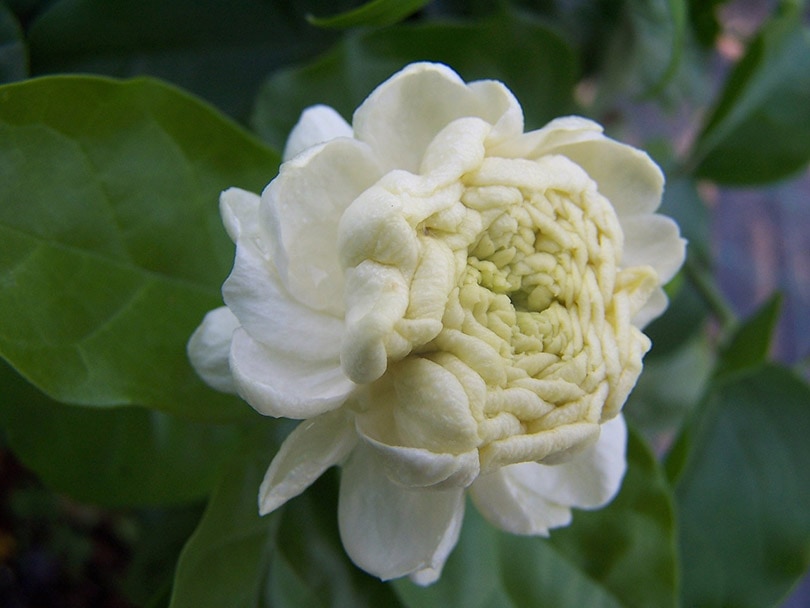
- Size: 6–8 feet
The Arabian Jasmine is an extremely fragrant variety that you are only likely to find in the extreme southern areas of the United States due to its preference for high temperatures. It’s an ornamental plant with flowers that open at night, so it’s perfect for growing near a deck or patio where people like to relax after a long day. It’s easy to maintain, so it’s perfect for beginners.
4. Coral Jasmine
- Size: 33 feet
Coral Jasmine is an Asian native species of Jasmine with many names, including Night Flowering Jasmine, Tree of Sorrow, Tree of Sadness, Lover’s Tree, Queen of the Night, and many more. It’s quite popular because it has a wide range of health benefits, and you can use it as an antioxidant, sedative, diuretic, and much more. The bark is antimicrobial, and the leaves are antifungal, so people use it for everything from hair tonics to heartburn cures. It likes to grow on rocky ground and is tolerant of different soils.
5. Downy Jasmine
- Size: 3–9 feet
The Downy Jasmine is a smaller bushy variety of Jasmine that is easy to care for, so it’s popular among new gardeners. It has bright white blossoms that attract your attention and appear on the bush all year long. You can let it grow naturally or trim it back for a more even and rounded appearance. It’s a fast grower that’s hardy and tolerant of different soils.
6. Dwarf Jasmine

- Size: 3–6 feet
The Dwarf jasmine is a great plan for small gardens because it is usually less than 6 feet tall and is quite bushy. The white to light pink flowers are 2 inches in diameter with yellow centers and bloom in clusters. The flowers are extremely fragrant and bloom mostly during the summer, but they can last for several weeks, so this is a great plant to have around the pool or patio.
7. Forest Jasmine
- Size: 14–18 feet
The Forest Jasmine is a strong climber with a woody stem that can grow to more than 5 inches in diameter. It produces white flowers at the end of small twigs with a sweet scent. It’s tolerant of many types of soil and shade, and you can even grow it indoors if you keep it by a window so it gets plenty of sunlight.
8. Italian Jasmine
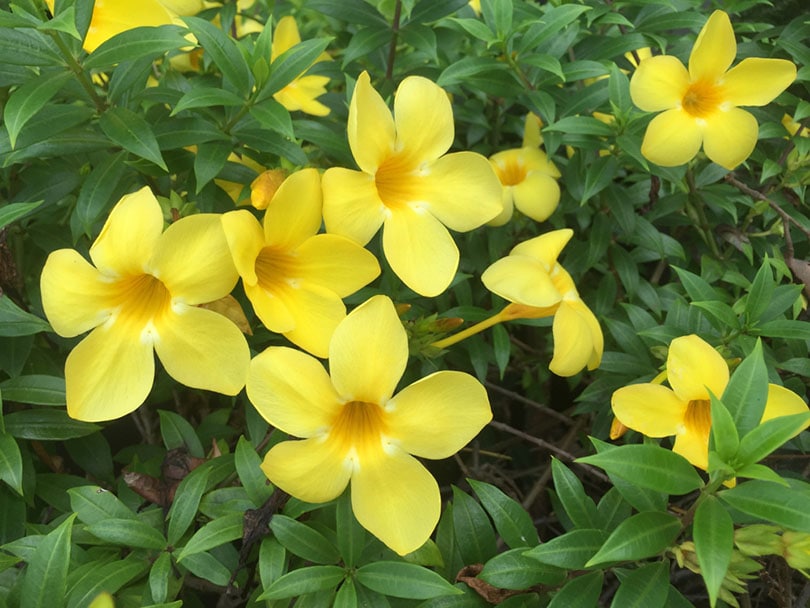
- Size: 12–15 feet
Oddly, Italian Jasmine plants come from western China. Unlike the many other Jasmine plants that we’ve looked at that have white or pink flowers, the Italian Jasmine produces yellow blossoms. The color is attractive to bees and hummingbirds, so you will likely see them in your garden throughout the spring and summer. It’s easy to grow and can handle colder temperatures than many others. It prefers well-drained soil and full sunlight.
9. Jasminum Vahl
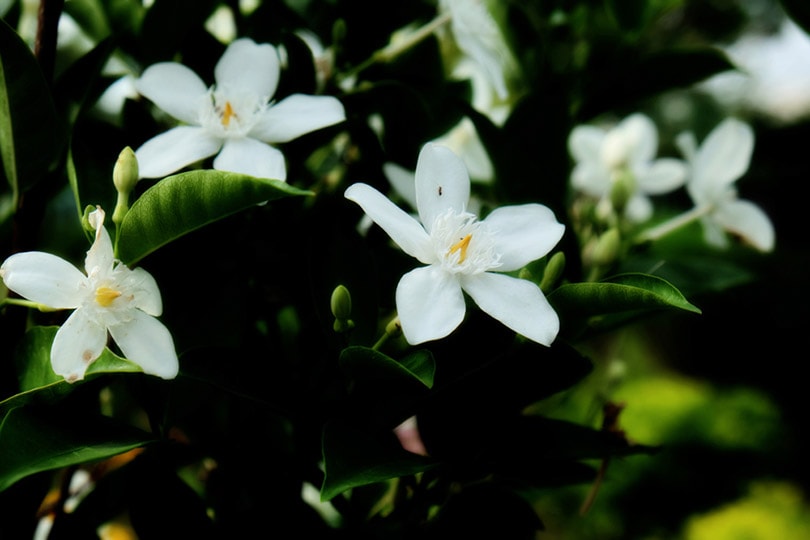
- Size: 4–5 feet
Jasminum Vale is a variety of Jasmine native to India and Thailand. It produces white flowers with a strong fragrance resembling Gardenia, a coffee family plant. Many farmers like to grow it for its oil, which is used in several folk medications. It’s an attractive vine-like plant that usually grows to 4 or 5 feet tall.
10. Lemon Scented Jasmine

- Size: 10–12 feet
Some people call the Lemon-Scented Jasmine variety an Azores Jasmine, so it sounds more official. However, the name couldn’t be more accurate because the white flowers it produces have a strong lemon fragrance. It can grow up to 12 feet tall, so it’s quite large, and it does a fantastic job of attracting butterflies, bees, hummingbirds, and other interesting wildlife. It likes moist but well-drained soil with plenty of sunlight and is easy to maintain.
11. Pink Jasmine

- Size: 25 feet
Pink Jasmine is a fast-growing variety that can reach up to 25 feet. It gets its name from the attractive pink buds that it produces right before they open into bright white flowers. As it blooms, more buds are produced, which creates an extremely colorful display that many people enjoy. It’s easy to grow on a trellis, or you can let it grow wild without supports.
12. Primrose Jasmine
- Size: 6–12 feet
The Primrose Jasmine is one of the few varieties that produce highly attractive yellow flowers, perfect for attracting pollinating bees and improving other plants’ growth in your garden. It usually grows 6 to 12 feet tall and about 6 to 12 feet wide, so it can take up quite a bit of space and requires extensive pruning.
13. Royal Jasmine
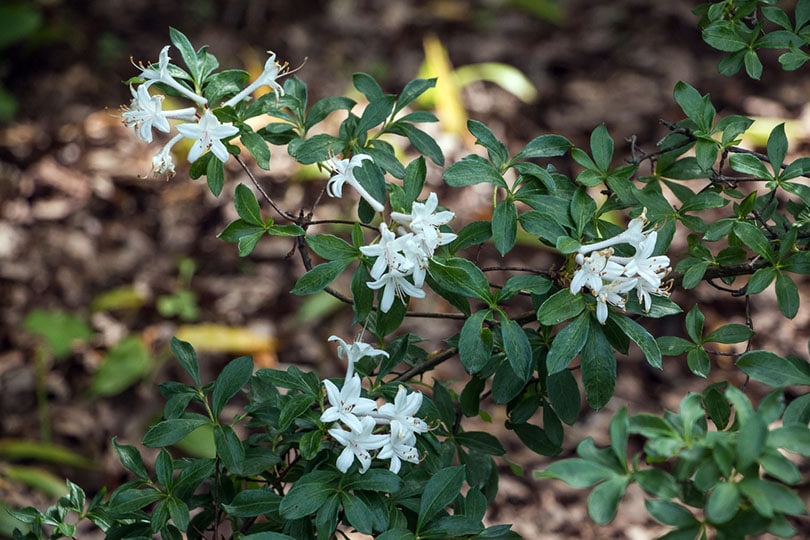
- Size: 6–12 feet
Royal Jasmine is a large variety that can get up to 12 feet tall. It blooms from spring until early fall and produces fragrant white flowers, usually less than 1 inch in diameter. It’s easy to grow, so it’s a favorite among new gardeners, and you can even bring it indoors if you have a large enough pot and a window that receives plenty of direct sunlight.
14. Wild Jasmine
- Size: 15–20 feet
Wild Jasmine is a large variety of the Jasmine plant that can often reach 20 feet in length. It produces white flowers with a strong fragrance and a small, decorative spherical berry. It’s easy to grow and is hardy enough to survive cold temperatures if sheltered. Experts often use it in medications that help with diabetes, stress, anxiety, lung cancer, and heart attacks.
15. Winter Jasmine

- Size: 15 feet
The Winter Jasmine is a highly sought-after Jasmine variety. It’s a medium-sized shrub or vine that can grow to about 15 feet tall. It has an attractive floral display of yellow flowers that many people enjoy during the winter. It’s easy to grow, doesn’t attract a lot of pests, and even tolerates shade, though it won’t produce that many flowers.
Conclusion: Types of Jasmine Flowers
As you can see, there are several types of Jasmine that you can grow, and all of them are attractive and highly fragrant. People often grow the Coral Jasmine and Wild Jasmine for their medicinal properties. During the winter, Jasmine will add some color to your landscape when little else will. Any of the other varieties can help improve your quality of life as you sit on the deck and look at the pretty flowers and smell their fragrance. The flowers also attract bees, hummingbirds, and other wildlife that are fun to watch and help the environment.
We hope that you have enjoyed reading through these varieties and found a few that you’d like to grow around your home.
Featured Image Credit: rdmargit13, Pixabay
Contents
